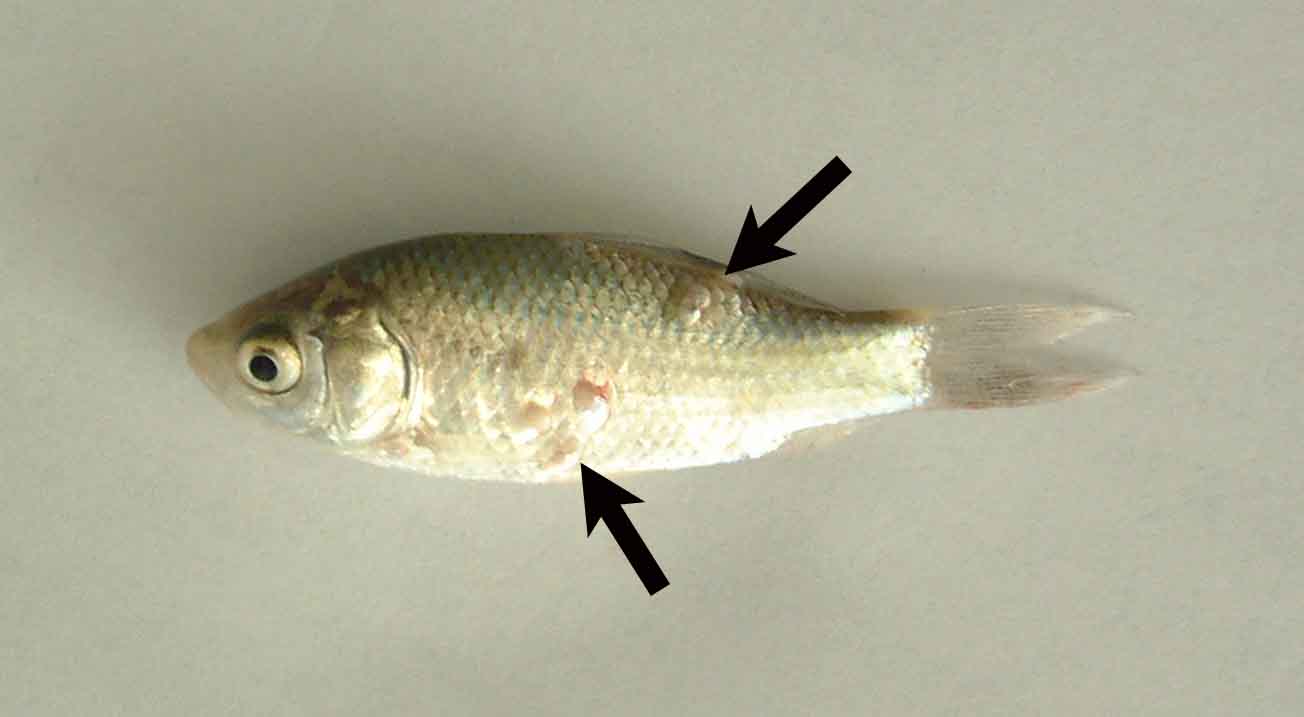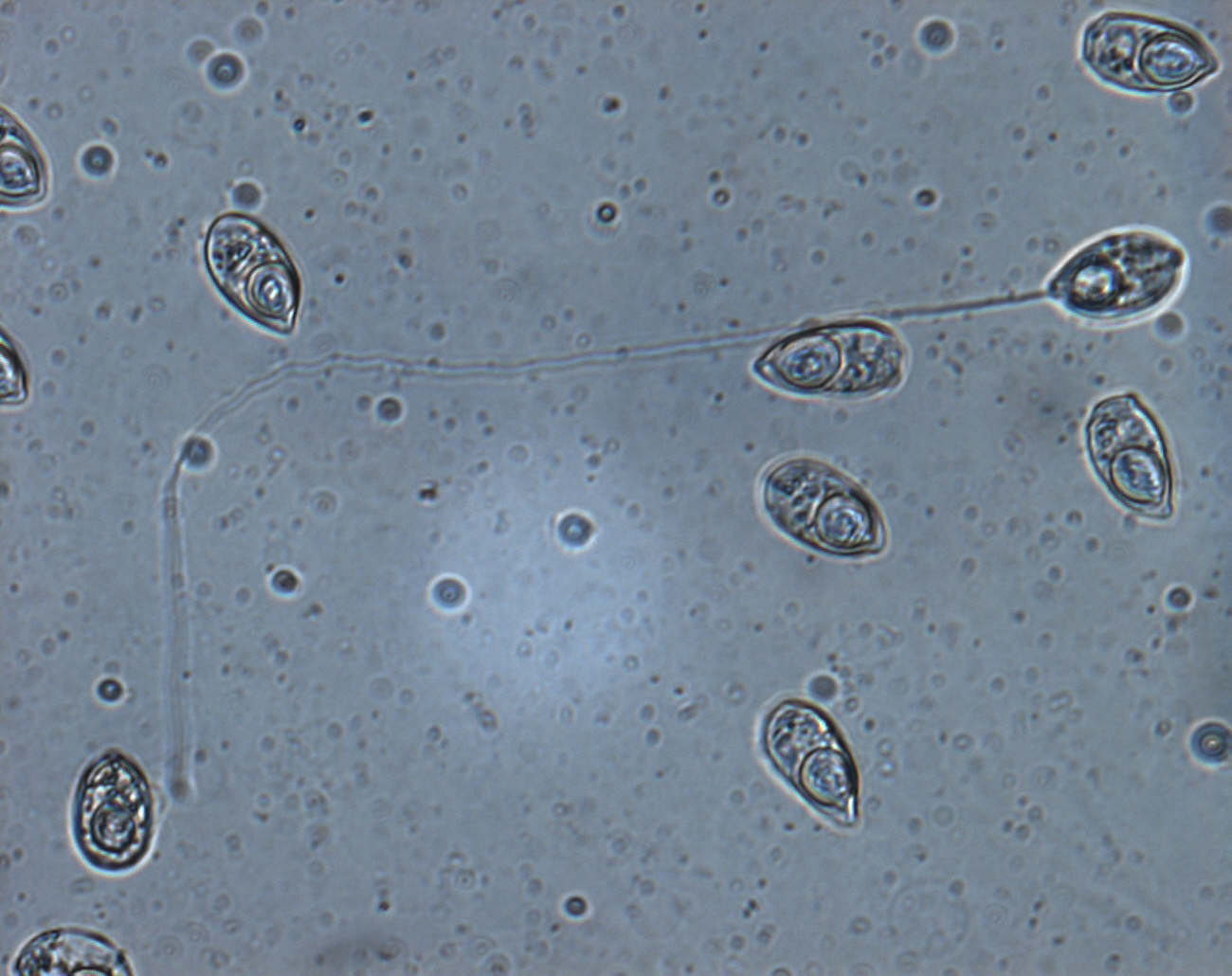
| Parasite | Thelohanellus wuhanensis |
|---|---|
| Taxonomy | Myxozoa, Myxosporea, Bivalvulida |
| Hosts | Prussian carp (Carassius gibelio) |
| Infection site | Skin |
| Clinical signs | Nodules are observed on the skin (Fig. 1). The lesions are occasionally haemorrhagic. |
| Parasitology | A number of spores are formed inside the cyst (Fig. 2). A spore (length 23.6 (21.0-25.0) mm; width 13.8 (12.0-15.5) mm; thickness 10.0-12.5 mm) is drop-shaped, having one polar capsule (length 10.5 (9.0-12.3) mm; width 8.1 (7.0-9.0) mm) (Chen and Ma, 1998). The life cycle is unknown. |
| Pathology | This parasite infects mainly fry of prucian carp and causes a mortality of the host fish. Haemorrhagic lesions may be resulted from tissue destruction associated with rupture of mature subdermal cysts. |
| Health hazard | Since this parasite is not infectious to human, it is harmless in food hygiene. |
| Diagnosis | Check the spores by the wet-mount of squashed cysts. Sample should be smeared and stained by Giemsa or Diff-Quik. |
| Other information | Mass mortalities were reported in a prussian carp farm in Wuhan City, Hubei, China in 1999 (Wang et al., 2001). A fumagillin treatment was effective for control of this disease (Wang et al., 2001). |
| References | Chen, Q. L., and C. L. Ma (1998): Myxozoa, Myxosporea. Fauna Sinica. Beijing,
Science Press, 987 p. Wang, G. T., W. J. Yao, J. G. Wang and Y. S. Lu (2001): Occurrence of thelohanellosis caused by Thelohanellus wuhanensis (Myxosporea) in juvenile allogynogenetic silver crucian carp, Carassius auratus gibelio (Bloch), with an observation on the efficacy of fumagillin as a therapeutant. J. Fish Dis., 24, 57-60. |

(Photos by Jin-Yong Zhang)

Fig. 2. Fresh spores ofT. wuhanensis.
Fig. 1. Nodules (arrows) ofT. wuhanensis on the skin.